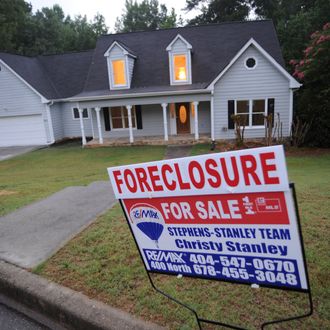
There is a story in Bloomberg News today about Rebecca Black.
No, not that Rebecca Black. A much less fortunate Rebecca Black, of Memphis, Tennessee, a 64-year-old African-American woman who lost her dream home to foreclosure in 2010, after her subprime, adjustable-rate mortgage became too expensive to pay.
It’s the kind of story you could tell about a family on almost any American block, but it’s notable because Bloomberg reporter Bob Ivry tells Black’s story in a Rashomon-like juxtaposition with the story of Thomas Marano, the white, Columbia-educated former Bear Stearns mortgage executive who ran the division that once held Black’s mortgage in an exotic mortgage-backed security named BSABS 2005-HE8, and who “makes more money in a single morning than Black does all year.”
You know how this ends: Black loses everything and declares bankruptcy, and Marano gets a cushy new job and builds a vacation home.
It’s easy to see someone like Marano objecting to the mere act of being written about in the same story as someone like Black. But it’s a necessary and useful device, because it connects a Wall Street executive to a real-life casualty of the housing bubble and its eased underwriting standards. It undoes the many layers of disintermediation between Black’s mortgage and Marano’s bonus, and presents it as a pat (perhaps a little too pat) story about asymmetric losses in times of economic crisis.
Of course, you didn’t need the housing collapse to figure out that a Columbia-educated white guy would accumulate more social and economic capital than a working-class black woman, or that the white guy would have a much larger safety net to rely on in times of hardship. But it’s humbling to see just how stark the differences in opportunity and recovery time can be.





























